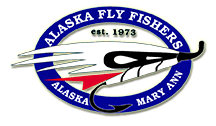

IPCH
By Bill Hauser
(This Fish Talk is a sort of sequel to last month’s Fish Talk on Pacific halibut.)
Fisheries resource allocation, in Alaska, is determined through the Board of Fisheries process and management of these fisheries resources is then the responsibility of the Alaska Department of Fish and Game. But, is the BOF andADF&G responsible for allocation and management of halibut resources in Alaska? No. The International Pacific Halibut Commission has that responsibility. The IPHC. I have found some interesting material in an IPHC Annual Report that I would like to share.
The IPHC was established in 1923 by a treaty between the United Sates and Canada for the preservation of the Pacific halibut fishery of the North Pacific and the Bering Sea. Three Commissioners each are appointed by the Governor General of Canada and the President of the United States. The commissioners appoint a Director who supervises the scientific and administrative staff. The scientific staff collects and analyzes the scientific and biological data to manage the fishery.
The IPHC meets annually to review proposals for new regulatory measures. These proposals may come from the industry, the scientific staff, a conference board of halibut fishers, and aProcessor’s Advisory Group. Recommendations by the Commission are submitted to the two governments for approval and regulations are enforced by the management agencies of both governments. Resource allocation among the commercial, recreational, and subsistence users is the responsibility of each government. In other words, the IPHC collects and analyzes data to evaluate the amount of harvestable halibut resource and the harvest rates of the halibut resource and to determine the biologically-based allowable harvest quotas of the resource for each of ten management areas from the coast of California to the Bering Sea in Alaska.
Implementation of the regulations is the duty of each countries management agency. To this end, the North Pacific Fishery Management Council was established by the U.S. Congress in 1976. The NPFMC is one of eight regional councils which oversee management of the nation’s marine fisheries. The NPFMC has eleven voting members; three, of which, are from Alaska. The Alaska Department of Fish and Game collects fishery data for the NPFMC and IPHC.
I did hedge a bit in the opening paragraph. In general, groundfish fisheries in the U.S. Exclusive Economic Zone (EEZ; 3–200 nm offshore) fall under federal authority whereas the State of Alaska (ADF&G) manages groundfish fishery resources and collect data within state territorial waters that extend out three miles from shore. For most federal groundfish fisheries, ADF&G issues emergency orders for state waters that duplicate federal management actions, except that gear or other restrictions may vary. These emergency orders establish parallel fishing seasons (termed “parallel fisheries”) allowing vessels to fish for groundfish (such as Pacific halibut, Pacific cod, walleye HalibutIPHC.doc 2 of 2 print 10/12/2016 pollock, and Atka mackerel) in state waters with the same seasons as the federal fisheries. The IPHC 2016 set the Pacific halibut commercial harvest allocation for Alaska at 18,160,000 pounds net weight.
Alaska Fly Fishers, 200 W 34th Ave, Suite 1233, Anchorage, AK 99503